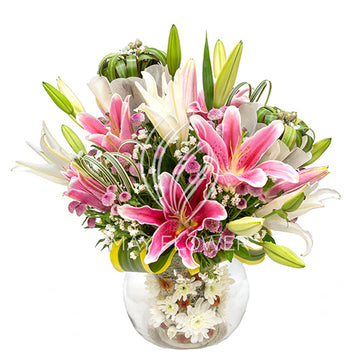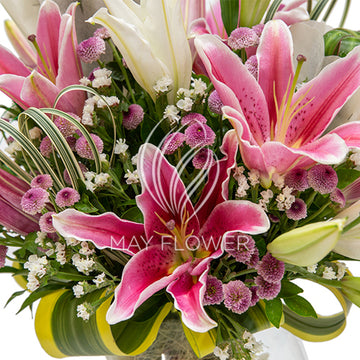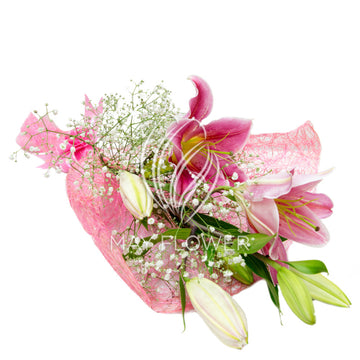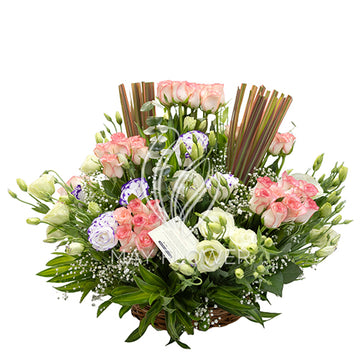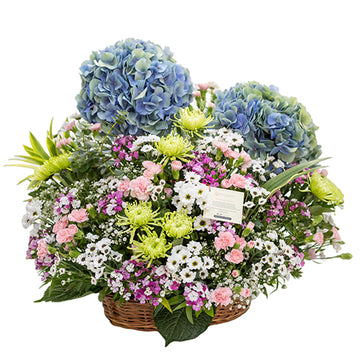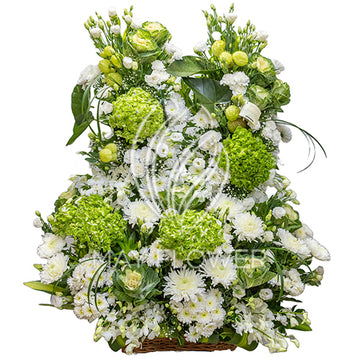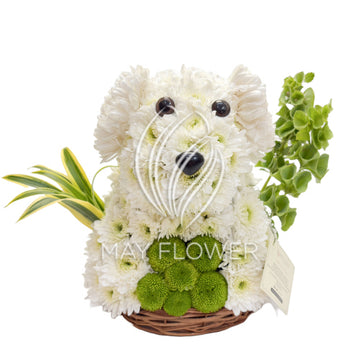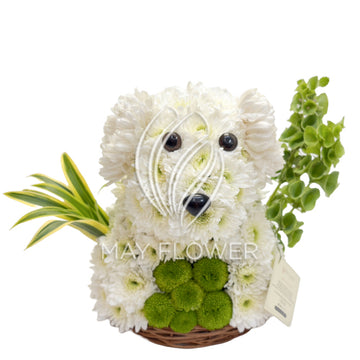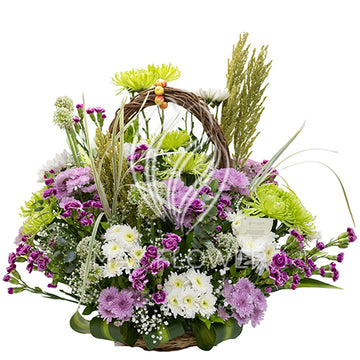How to Prolong Life Of Your Flowers
Prolong life of your flowers
Cut flowers, whether purchased from the florist or cut from your own garden, will last much longer in the vase if you follow the simple guidelines below.
Use a clean vase
Start with vases that have been cleaned with hot soapy water to eliminate bacteria and fungi and then rinsed thoroughly.
Prepare the flowers properly
Cut just-opening flowers early in the morning and place in water immediately. The vase life of flowers that ooze a milky “sap” (poinsettias, poppies) may be improved by immersing the bottom 2 inches of their stems in boiling water for 10 seconds before using them in an arrangement.
Gently remove lower leaves from the stem so there will be none in the vase water.
Before you put any flowers in the vase, recut the stems, removing 1 to 2 inches at an angle under water. You can do this in a basin full of water, or even by holding the stem and the blades of the shears (or kitchen scissors) under running tap water.
Don’t crush or burn flower stems. In our experience these practices are of little value.
Water for Flowers
Flowers in most arrangements collapse early because they are unable to obtain enough water to keep them looking crisp and fresh. There are a number of ways to ensure that your flowers get enough water:
(1) Re cut them under water to ensure that no air gets into the stems.
(2) If you live in a hard water area (you find white deposits in teakettles and on faucets), use demineralized water sold in supermarkets for filling steam irons, to make your vase solutions.
(3) Use a vase solution which is hot but not uncomfortable (100 degree F).
(4) Use one of the following suggested vase “preservatives.”
Never use softened water in a vase solution as it contains sodium, which is bad for cut flowers.
Food for Flowers
Flowers are living things, and like us they need food for proper growth and healthy color. Amazingly, you can provide much of what a cut flower needs with one of the following simple vase solutions. They contain acid to improve water flow in flower stems, sugar to help buds open and last longer, and a preservative to reduce growth of bacteria and fungi.
(1) Mix one part of any of the common lemon-lime sodas with three parts of water. Do not use diet drinks or colas. Diet drinks have no sugar and the colas contain too much acid for flowers. Adding 1/4 teaspoon of household bleach (Clorox or similar) per quart will keep the solution clear.
(2) Put 2 tablespoons of lemon juice or bottled “Real Lemon,” 1 tablespoon of sugar, and 1/4 teaspoon of bleach in a quart of warm water. Add another 1/4 teaspoon of bleach to the vase every 4 days.
(3) Use a commercial flower preservative. These are sold in florist shops and supermarkets but may not be as effective as the above recipes for improving flower vase life. However, they are inexpensive and very convenient to use; simply follow the directions on the packet.
Don’t use aspirin or vinegar in vase solutions; they are rarely effective in increasing vase life of flowers.
Use arranging aids properly
If you are using florist foam as an arranging aid, let it soak in the vase solution until it sinks. Do not push it down into the container as air bubbles will remain inside the foam and cause early flower death. Insert stems carefully.
Keep flowers cool
The higher the temperature, the faster flowers will deteriorate, so it is advisable to cut them early in the morning, when temperatures are cool, and to avoid exposure to heat. Don’t place arrangements in sunny locations, near heaters or fireplaces, or on top of television sets. Do put arrangements in a cool place overnight if you possibly can.
Even flowers require plant food in order to maintain optimal health. Fresh flower food is an excellent source of nutrition for flowers, especially cut flowers. Using food for cut flowers can increase their vase life, sometimes up to fifty percent according to many florists. This percentage can be even greater when other cut flower care tips are implemented as well. Cut flower food also provides numerous benefits in addition to prolonging vase life.
The sugary substances included in plant food solutions provide flowers with nutrients not only to keep cut flowers healthy, but to allow them to continually develop and maintain color as well. Additional ingredients help control pH levels, or acidity. There are even additives aimed at controlling microorganisms, which can lead to the buildup of harmful bacteria.
While there are many types of cut flower food products on the market, some of them can be quite costly. However, as an alternative to using these commercial brands of plant food, many people choose to make their own. In fact, homemade flower food can be just as effective at only a fraction of the cost. All it takes is a teaspoon of sugar added to a pint of water. An additional teaspoon of lemon juice or vinegar will help control pH, levels while a teaspoon of bleach will help reduce bacteria.
In addition to flower food, cut flowers have specific needs both prior to harvesting as well as after. For instance, to ensure that flower stems are adequately filled with water prior to cutting, they should be harvested in the morning or evening, at least an hour after watering them. Cut flowers also absorb water more easily when they are cut at an angle. Freshly harvested flowers should always be placed in water immediately to avoid wilting.
Other cut flower tips that can help prolong vase life along with flower food include choosing unopened buds rather than fully developed flowers. Water should be changed at least every few days and cut flowers should be located out of direct sunlight to keep them cooler. Plant stems with milky sap should be dipped in boiling water to seal the ends while those with woody stem should be crushed prior to placing in water. It also helps to recut and crush these stems every other day.
To prolong the life of fresh-cut flowers, florists recommend you use commercial flower preservatives
The additives work by providing food in the form of sugar, fighting the growth of harmful microorganisms and allowing the plant to take in nutrients more efficiently by raising the acidity of the water (lowering its pH).
You may have heard that numerous homemade vase solutions — including water mixtures containing copper pennies, aspirin, vodka, sugar, 7-UP or bleach — mimic the effects of commercial preservatives. But do these home remedies actually work?
To start, pennies don’t extend the life of your flowers. Though copper is a well-known fungicide, the copper in pennies isn’t soluble, University of Florida horticulturalist Terril Nell wrote in a June 2004 article in Florists’ Review Magazine.
Whether aspirin (acetylsalicylic acid) can effectively lower the pH of water and extend the life of fresh-cut flowers is up in the air. Some studies have found a positive benefit to using ground-up aspirin, while others have not.
Other home ingredients can help keep flowers fresh if used in conjunction with one another, according to experts from the University of Massachusetts Amherst (UMA).
A sugar solution can provide food for the flower, but it will also promote the growth of microbes. You can add bleach to the solution to control microbial populations, and citric acid to lower the water’s pH.
Citrus soda, such as 7 Up and Sprite, can effectively make flower water both acidic and sugary, Susan Han, a UMA plant physiologist, told Scientific American. Han recommends concocting a solution of one part soda and three parts water, along with a few drops of microbe-killing bleach.
Vodka may also help preserve fresh-cut flower blooms. Vodka is often claimed to help flowers due to antimicrobial properties, but the spirit likely has a different effect, according to John Dole, a horticulturalist at North Carolina State University.
When you add a few drops of vodka to vase water, it probably delays wilting by inhibiting a flower’s production of ethylene, a ripening gas that plants emit, Dole told Scientific American.
Hence these are some tips that are recommended by most Senior Horticulturists and Scientists in the field and can have your blooms last longer.
For more information and to order flowers online, visit : Mayflower.in
